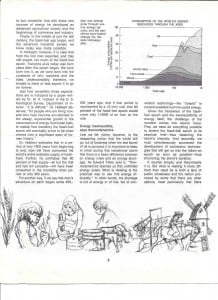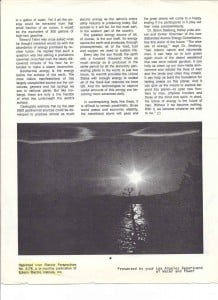A new publication Renewable Energy: Facts and Fantasies by Craig Shields, the editor of www.2greenenergy.com, surveys the renewable energy field and has a chapter on cold fusion.
It consists of a short conversation with Wally Rippel, a long-time researcher in electric vehicle batteries who has worked in both government and industry.
The 5-page conversation begins on page 171 and is most interesting for the bit of background given on Wally’s experience talking about cold fusion at Caltech, one of the premier research universities in the US.
Here’s a brief excerpt of the conversation the author/editor Craig Shields had with Wally:
CS: OK, thanks. I think I understand the physics now—at some level, at least. But why is this so controversial? Why do people believe that this is bad science, a hoax? I would think that it either happens or it doesn’t.
WR: Actually, the human side of the equation is even more interesting than the science. There has been a calculated effort to discredit the idea of cold fusion. For obvious reasons, cold fusion threatens existing energy-related interests, and those interests have been intensely aggressive with throwing people off the trail.
CS: But I heard that the people who looked into this couldn’t find nuclear products.
WR: Ah. That’s simply not true. The researchers from Cal Tech and MIT did find nuclear products; they fudged the numbers to get the DoE off the case. The US Navy and Lawrence Livermore have also found clear evidence of nuclear results. And even when they admit they find nuclear products, they would say things like, “Oh the engineering on this will be really hard.” I’m not saying it will be easy, but that’s like saying, “There is a trillion dollars in that safe over there, but there is no use trying to get at it because the combination lock might be hard to open.” All these ridiculous ideas are a result of the enormous pressure to agree with the idea that cold fusion is a hoax.
CS: To me, this sounds a lot like what I hear about the science—and the politics—behind global warming. I hear that even extremely senior people are ostracized all the time for not conforming to the mainstream viewpoints on the subject.
WR: Exactly right. Dr. Peter Hagelstein at MIT, best known for his X-ray laser, is also a strong proponent of cold fusion. He’s been isolated from the entire scientific community because of that belief. Some of the people who had investments in cold fusion testified against it, apparently so that they could maintain majority control of the development of the technology.
“Yet despite all the active attempts to divert attention away from cold fusion, the technology carries with it an enormous amount of credibility—but most of it is very quiet. For instance, the US Navy has performed experiments producing neutrons in groups of three. Also, there is an internal memo within DARPA in which they clearly state that they believe that cold fusion is real.”
“Energy companies have worked hard to discredit cold fusion, though, with the Obama administration, they will have a harder time doing this than they did under Bush.”
“Cal Tech has done almost no research in the subject. After the Great Electric Car Race, I was asked to be the parade master for the celebration in Pasadena. When he talked publicly about the race, [Cal Tech president] Dr. Lee DuBridge always used my name rather than his own in discussing the project. I once asked him why he did this, and he told me, “As the president of Cal Tech, my number one responsibility is fund-raising. That’s all I’ll say.”
“What you need to know to understand this is that the oil companies make huge annual contributions. Fred Hartley, Union Oil’s president and trustee of Cal Tech, explained that he would tell the school, “We won’t be able to continue to make these contributions if you are developing technology that represents a threat to us.” What Union Oil is doing is not illegal. There’s no law that says an oil company has to contribute to Cal Tech. Depending on your viewpoint, it’s not even immoral.”
End quote.
A summary/review by George Alger of the the book is available here at Renewable Energy World.
The book is available for purchase or a free download if your register here.








